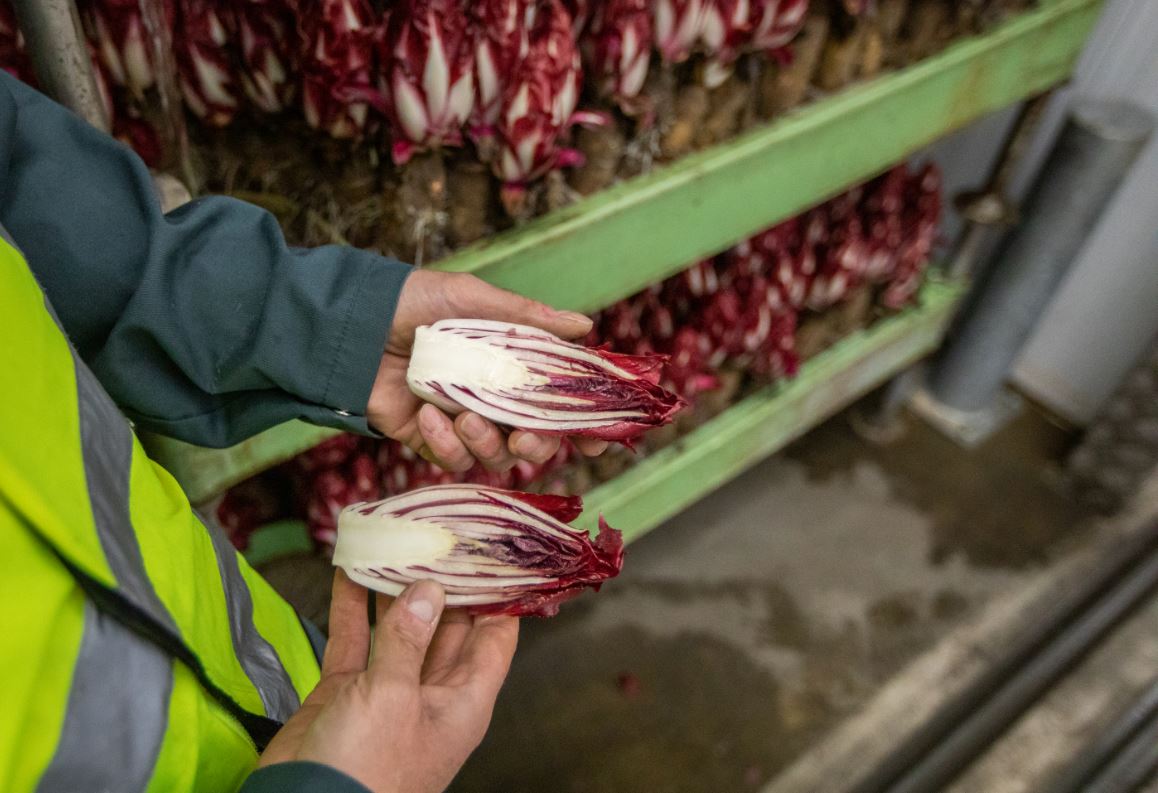The UK’s only commercial grower of chicory, we have mysterious growing rooms where chicory grows in an eery darkness. It’s not an easy vegetable to grow and to be successful the process involves a field, plant trickery, absolute darkness, dripping water and a few clever people.
First, we have to grow the root. This grows in a field and looks relatively similar to a parsnip but with a leafier top. We trim the greenery off the root and put the roots into large cold stores to chill down – or to undergo vernalisation if you want the technical term. This fools the root into thinking winter’s arrived a bit sharpish, sending it off to sleep. We need the root to go through this cycle before it will sprout again.
We kick the sprouting process off depending on demand and the time of year (people tend to eat more chicory in the summertime, for example) by defrosting some trays of roots and placing them in our hydroponic forcing rooms.
‘Forcing’ sounds a bit brutal, but it’s just the word used for this type of growing. We talk about forcing rhubarb too – another crop that’s best grown in the dark. The roots sprout a head, known as a chicon. That’s the bit we harvest once it’s grown to the right size and which we sell as chicory. It’s kept in the dark as light encourages the colour pigmentation in the chicon. It’s this colour pigmentation which can give chicory a strong, bitter taste, so growing it in the dark means that we produce something much creamier and more palatable. That’s also why you should keep chicory in the dark once you get it home.
It takes us 21 days to grow a chicon to the right size for the UK’s supermarkets, so this is the point where we harvest it and pack it. We currently grow over 4 million heads of chicory each year.
From root to pack – watch the below video to see how it all works:
